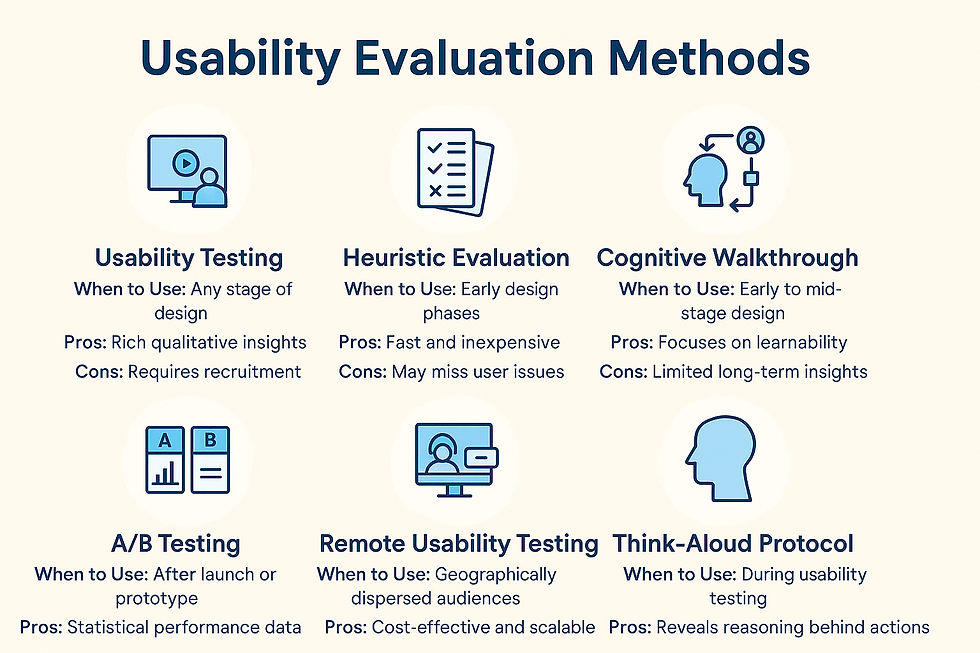How to Conduct Research Step by Step: A Practical Guide for UX and Beyond
- Philip Burgess
- Aug 17
- 2 min read
Updated: Oct 26
By Philip Burgess - UX Research Leader
Whether you're launching a new product, refining a user experience, or validating a business strategy, research is your compass. But conducting research isn’t just about collecting data—it’s about asking the right questions, choosing the right methods, and translating insights into action. Here’s a step-by-step guide to help you navigate the research process with clarity and confidence.
1. Define the Research Goals
Start by asking: What do we need to learn? Your goals should be specific, actionable, and aligned with business or design objectives.
Are you trying to understand user behavior?
Validate a new concept?
Identify pain points in an existing experience?
Clear goals will guide every decision that follows.
2. Identify Stakeholders and Scope
Engage with cross-functional partners early—product managers, designers, marketers, engineers. Clarify:
Who needs to be involved?
What decisions will this research inform?
What constraints (time, budget, access) do we need to consider?
This step ensures alignment and sets realistic expectations.

How to Conduct Research Step by Step: A Practical Guide for UX and Beyond
3. Choose the Right Methodology
Select methods based on your goals, timeline, and available resources. Common approaches include:
Qualitative: Interviews, usability testing, diary studies
Quantitative: Surveys, analytics, A/B testing
Mixed methods: Combining both for richer insights
Don’t default to what’s familiar—choose what best answers your research questions.
4. Create a Research Plan
Document your approach in a clear, shareable format. Include:
Objectives and hypotheses
Methodology and rationale
Participant criteria and recruitment plan
Timeline and deliverables
This plan becomes your blueprint and helps keep everyone aligned.
5. Recruit Participants
Define your target audience based on the product or experience you're researching. Consider:
Demographics and behaviors
Accessibility and diversity
Incentives and scheduling
Use screeners to ensure participants match your criteria and avoid bias.
6. Conduct the Research
Facilitate sessions with empathy and neutrality. Whether you're moderating interviews or analyzing survey data:
Follow your protocol but stay flexible
Take detailed notes or record sessions (with consent)
Observe patterns, behaviors, and emotional cues
Your role is to uncover truth—not confirm assumptions.
7. Analyze and Synthesize Findings
After data collection, shift into analysis mode. Look for:
Themes and patterns
Contradictions and surprises
Quotes and metrics that support key insights
Use frameworks like affinity mapping, journey mapping, or statistical analysis to organize your findings.
8. Share Actionable Insights
Translate your findings into clear, compelling deliverables. Focus on:
What you learned
Why it matters
What to do next
Tailor your format to the audience—executive summaries, slide decks, or detailed reports. Always connect insights to decisions.
9. Archive and Operationalize
Store your research in a centralized, searchable repository. Tag it by topic, method, and audience. Then:
Share learnings across teams
Reuse templates and protocols
Build playbooks for repeatable success
Operationalizing research ensures it scales and drives long-term impact.
Final Thoughts
Research isn’t a one-time activity—it’s a mindset. By following these steps, you’ll not only uncover valuable insights but also build trust, influence strategy, and champion the voice of the user. Whether you're a seasoned researcher or just starting out, this framework will help you lead with clarity and purpose.
Philip Burgess | philipburgess.net | phil@philipburgess.net




Comments